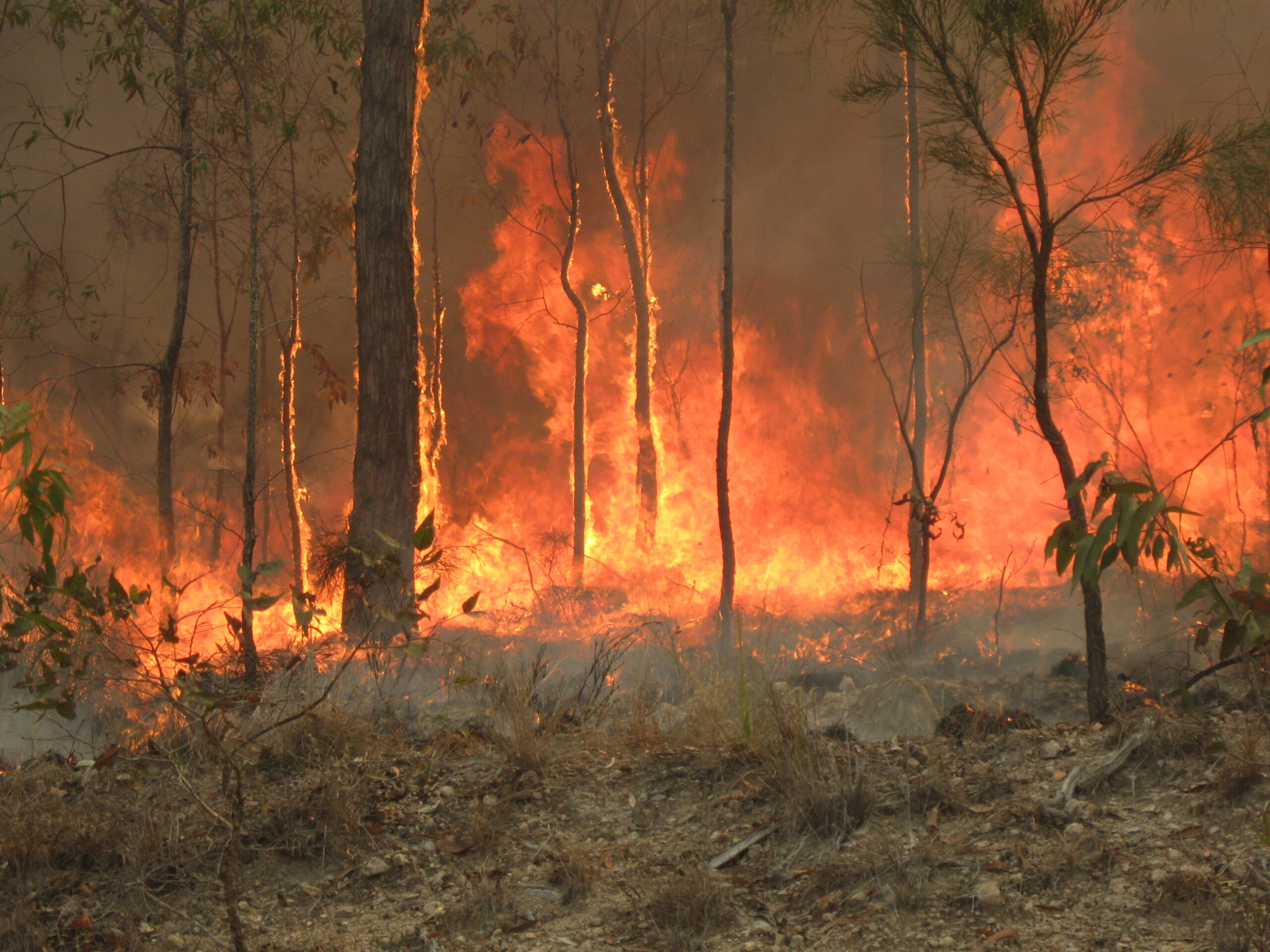US President Joe Biden has rightly described climate change as an “existential threat to humanity.” But tackling that threat will require more than just recognising it – rapid and far-reaching action is needed. Will his presidency be up to the challenge? In the second article in a series on the prospects of the Biden presidency, Tom Baldwin sifts the evidence.
Upon being sworn into office, Biden spent his first day as president signing executive orders. These included announcing that the US would re-join the Paris agreement, the international treaty on climate change agreed in 2015, which his predecessor Donald Trump had left.
Other measures included halting the environmentally controversial Keystone XL oil pipeline and introducing a ‘social cost of carbon’ to guide future decisions. By making immediate proclamations, he hoped to display his ‘green’ credentials and mark a clear step away from the environmental vandalism of the Trump presidency.
This change in direction is welcome but, alone, it is not a cause for excessive optimism. Trump set the bar so pitifully low that Biden almost couldn’t help but be an improvement.
A climate sceptic, Trump claimed his “natural instinct for science” led him to question the findings of virtually every climate scientist – that climate change is caused by human activity.
As well as taking the US out of the Paris agreement, his administration also attempted to roll back nearly 100 environmental protections, and green-lit fossil fuel extraction in national parks and coastal waters. However, returning to pre-Trump policies will not be sufficient, especially in the light of updated research within the last four years.
Initial hopes by some environmental activists that Biden would oversee radical climate action are now being tempered by reality. Greta Thunberg, who initiated the worldwide school strikes for climate action, had called for people to vote for Biden in a tweet last October. However, she has since criticised his policies as being “not nearly enough in line with the science”, and urged him to treat the issue as a crisis. Unfortunately, the experience of his first four months in office reflect that.
Limitations
While there have been big steps forward, there are also still significant limitations in his programme. As an international collective of young climate activists said in an open letter to the new president: “Being better than Trump isn’t enough”.
Increased scientific understanding of ‘tipping points’ and ‘feedback loops’, where temperature rises caused by human activity will themselves increase the rate of climate change, make for worrying reading.
Each refinement of climate science demands more urgent action than the last if we are to prevent complete climate catastrophe. Reductions in net greenhouse gas emissions must be made rapidly and on a global scale.
However, the policies of individual governments can still make a big difference, especially in a country like the USA. As the producer of over 13% of global CO2 emissions, it is the world’s second largest polluter after China, producing almost twice as much CO2 per person. As the most powerful imperialist nation on the planet, the approach the US government takes can have enormous influence beyond its own borders.
While the return to the Paris agreement is a step in the right direction, it falls well short of what will be necessary to avoid the worst effects of climate change. The agreement aims to keep global warming to a minimum of a two degrees Celsius rise above pre-industrial levels.
Unfortunately, according to the United Nations Intergovernmental Panel on Climate Change (IPCC), even if every commitment made under the Paris Agreement is met then global warming would still rise by 30C, with devastating consequences. Moreover, not a single industrialised country is even on track to meet its commitments.
Since the Paris Agreement was first signed, it has been discovered that it is not only its implementation that is failing, even its ambition was insufficient.
A landmark piece of scientific research published by the IPCC in 2018 shows that we must now be aiming at a maximum rise of 1.5 degrees. Achieving this would require greenhouse gas emissions by 2030 to be around half those pledged under the Paris Agreement.
Biden convened an online climate summit to mark ‘Earth Day’ in April, attended by 40 world leaders. Describing this as a “decisive decade” in the fight against climate change, he unveiled a target for a 50% cut in carbon dioxide emissions in the US by 2030, compared to 2005 levels.
He also called for other countries to improve their commitments and stressed the importance of limiting global warming to 1.5 degrees. However, staying within that limit would require net zero emissions to be reached before the 2050 deadline pledged by Biden himself.
Research published this year by academics at the University of Washington claimed the US would need to double its current commitments to give even a 50% chance of staying below 1.5 degrees.
Likewise, the return of the ‘social cost of carbon’ policy is limited by its implementation. Signed on Biden’s first day in office, this is supposed to ensure that combating climate change is a priority across his administration. It puts a nominal dollar cost on carbon emissions which is to be considered in all government decision making.
As an interim measure this has been set at $51 per ton of carbon dioxide, the same level as at the end of the Obama administration. An updated figure won’t be set until January 2022, when one-quarter of Biden’s term in office will have already passed. Experts argue that the figure should be at least double its current level.
Much has been made of the $2.2 trillion infrastructure plan which Biden hopes to get through Congress. This is one of a series of big spending proposals which mark a significant shift in the management of American capitalism. Driven by economic necessity, it is a turn away from the neoliberal, untrammelled free-market policies that have dominated since the Reagan era of the 1980s.
Welcome climate and environmental measures are included in this ambitious spending plan. For example, there is an investment in renewable energy production to kick off efforts to reach a target of 100% clean power by 2035.
However, it falls short of the Green New Deal called for by left Democrats like Alexandria Ocasio-Cortez and Bernie Sanders, which in turn was less radical than the version first advanced by US Green Party 2020 presidential candidate Howie Hawkins.
Transport
Under Biden’s proposals 20% of America’s fleet of yellow school buses would be converted into electric vehicles. With transport now ahead of energy production as the largest source of greenhouse gasses in the US, there is clearly more to be done.
The package includes $25 billion marked for airports. This will partly be directed towards environmental aims but also to expanding capacity.
Columbia University’s Adam Tooze has calculated that Biden’s climate spending amounts to just 0.5% of US GDP (total economic output), an amount ten times smaller than that required to decarbonise the economy.
One indication of Biden’s environmental ambition is the appointment of former Secretary of State John Kerry as special envoy for climate. Kerry’s approach to tackling climate change centres on the failed policy of carbon-pricing, creating a market price for pollution.
This big business-friendly approach was the sole focus of an opinion piece he wrote for The Hill since Biden’s election victory, entitled ‘How To Better Tackle Climate Change’. There was no mention of a green new deal or of how to drive a shift to renewable energy. In fact, Kerry has a record of supporting a short-term expansion of US fossil fuel extraction under Barack Obama’s administration. Overall, US oil and gas production grew by 88% during Obama’s eight-year tenure in the White House, with Biden as vice-president.
Other appointments to Biden’s team include Cedric Richmond as a senior advisor to the president and head of the White House Office of Public Engagement, where his responsibilities will include popularising the administration’s climate change policies.
The former Louisiana congressman had previously come under fire from his own constituents for failing to engage with them or take action over the issue of air pollution when his district covered seven of the ten most polluted areas in the US. The pick has been called a betrayal by climate activists due to Richmond’s history of large campaign donations from fossil fuel sources and his perceived closeness to the industry.
Embarking on a rapid shift to clean, renewable energy sources will be vital to tackling climate change. The expansion of US fossil fuel production has been driven by a rise in fracking. This is the process of pumping a high pressure water and chemical mix into the ground to break up the rocks below and allow oil or gas to be extracted. It is controversial because it continues reliance on fossil fuels, and also due to worries about the contamination of water supplies.
Fracking accounts for a big majority of US oil and gas production and almost all new extraction; it is therefore a key question of American environmental policy. In a boost to the industry and a blow to environmentalists, Biden has repeatedly denied that he would ban fracking.
He has limited himself to stopping new permits for extraction projects on federal land. This land accounts for less than 10% of current fracking and fewer than half of the existing permits are currently in use, meaning that this policy, unveiled to much fanfare, may actually have very little effect on reducing climate emissions.
Similarly, the revoking of the presidential permit for the Keystone XL oil pipeline is welcome but insufficient. Other controversial pipeline projects remain in effect. These include the Line 3 project, which will bring oil from the highly polluting tar sands extraction of Alberta, Canada – described by National Geographic as “the world’s most destructive oil operation”.
This latter project has sparked protests, particularly where it crosses native land in Minnesota. Militarised police were unleashed against Native American and other protesters opposing the Dakota Access Pipeline while Biden was serving as Obama’s vice-president.
Big business
History will judge Biden’s action on climate change, not by a flurry of announcements in the honeymoon period of his first few months but by how his stated aims are implemented over the course of his presidency.
Ultimately, the effectiveness of his green policies will be a question of who he represents. Trump’s bonfire of environmental regulations was for the benefit of big businesses, removing obstacles to them making even more profit.
Biden represents the interests of exactly that big business class. His presidential campaign garnered donations from over 130 billionaires or their partners, around half of them giving six-figure sums.
He pledged not to take money from people associated with the fossil fuel industry, but actually benefited from almost $1.5 million in such donations, according to the non-partisan research group Center for Responsive Politics. Millions more went to other Democratic Party campaigns.
When the drive for profits collides with the needs of the planet then Biden’s support for big business will compromise his environmental promises.
Any president, no matter how sincere their commitment to tackling climate change, would be severely constricted in what they could achieve on the basis of capitalism. Most of the decisions that govern the economy are not taken in the Oval Office but in the boardrooms of big business.
These companies operate to make a profit above all else. They will attempt to frustrate any environmental regulation that hits their bottom line by lobbying legal action and by investment decisions.
The unplanned nature of capitalist competition makes it impossible for any government to implement the urgent and sweeping changes that are needed to avoid a climate catastrophe. To do so requires a socialist government that would draw up a sustainable plan of production subject to the democratic control of the working class, within an international framework of socialist cooperation.









